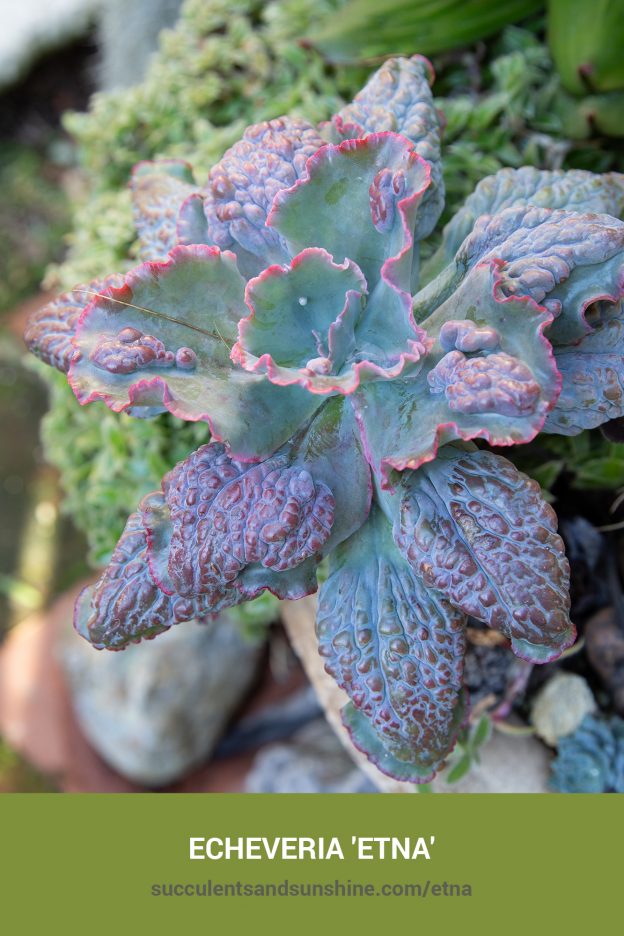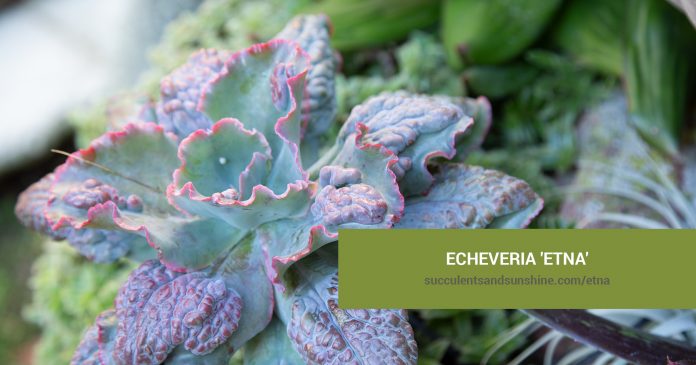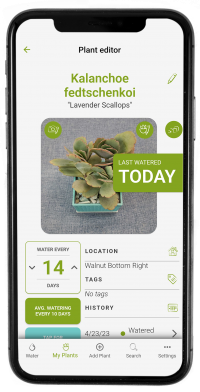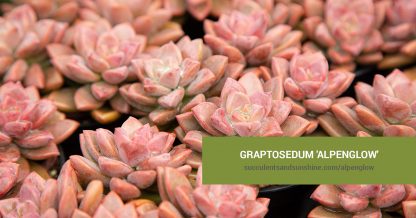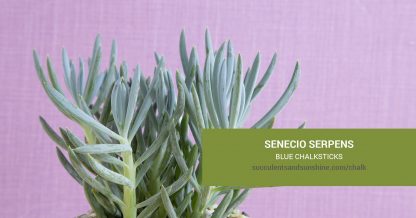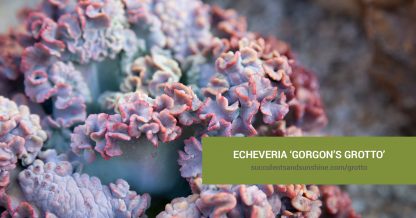Care and Propagation Information
General Care for Echeveria 'Etna'
‘Etna' is a great addition to rock gardens. The single rosette grows wide, so it's best not to plant in an arrangement with ground-cover succulents. ‘Etna' is an Echeveria gibbiflora hybrid. Its flowers are orange and yellow, blooming in the Summer.
Watering
Echeveria ‘Etna' has typical watering needs for a succulent. It's best to use the “soak and dry” method, and allow the soil to dry out completely between waterings.
Where to Plant
‘Etna' is not cold hardy, so if you live in a zone that gets colder than 30° F (-1.1° C), it's best to plant this succulent in a container that can be brought indoors. It does well in full to partial sun.
Plant in an area of your garden that gets 6 hours of sunlight a day. If planting indoors, place in a room that gets a lot of sunlight, such as near a southern-facing window (if you're in the Northern Hemisphere).
How to Propagate Echeveria 'Etna'
Echeveria ‘Etna' can be propagated by cuttings and offsets.
Cuttings
To propagate ‘Etna' from cuttings, use a sterile, sharp knife or pair of scissors. Remove a stem from the main plant, and allow it to callous for several days before placing on well-draining soil. Water whenever the soil has dried out completely.
The original stem will grow a new rosette.
Offsets
Echeveria ‘Etna' will produce small offsets, sprouting up around the base of the plant. Simply pull these up and allow the offsets to dry for one to two days before replanting.
Additional information
‘Etna' is named for Mount Etna, an active volcano in Italy.
